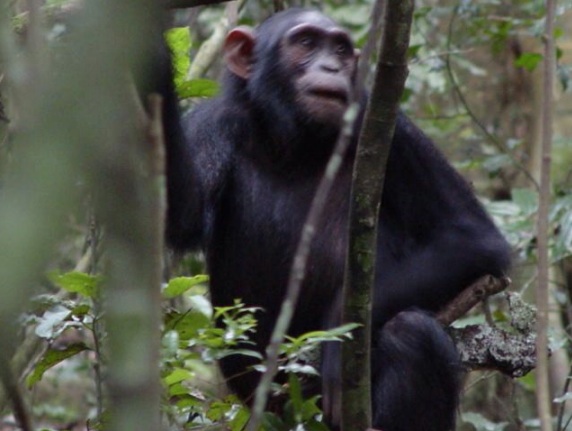Young Chimps Play with Stick 'Dolls'

Just in time for Christmas, a new study finds that human children aren't the only primates to play with toys. Young chimpanzees in Uganda play with sticks as if they are dolls, the study found.
Echoing sex differences seen in human children, young female chimps played with their makeshift dolls more often than males, according to the report published Dec. 21 in the journal Current Biology.
"This is the first evidence of an animal species in the wild in which object play differs between males and females," study coauthor Richard Wrangham, a Harvard University primatologist, said in a statement. [8 Human-Like Behaviors of Primates]
The new observations come from 14 years of observation of the Kanyawara chimpanzee community in Kibale National Park, Uganda. Wrangham and coauthor Sonya Kahlenberg of Bates College in Maine found that chimpanzees use sticks in four main ways: as probes to investigate holes potentially containing water or honey, as props or weapons in aggressive encounters, during solitary or social play, and in a behavior the researchers refer to as stick-carrying.
Wrangham said they had seen stick-carrying from time to time over the years and suspected that females were doing it more than males. Their detailed behavioral investigation has now confirmed that suspicion.
"We thought that if the sticks are being treated like dolls, females would carry sticks more than males do and should stop carrying sticks when they have their own babies," Wrangham said. "We now know that both of these points are correct."
Young females sometimes took their sticks into day-nests where they rested and sometimes played with them casually in a manner that evoked maternal play, the researchers report.
Sign up for the Live Science daily newsletter now
Get the world’s most fascinating discoveries delivered straight to your inbox.
It's not yet clear whether this form of play is common in chimpanzees, the researchers say. In fact, no one has previously reported stick-carrying as a form of play, despite considerable interest among chimpanzee researchers in describing object use. "This makes us suspect that stick-carrying is a social tradition that has sprung up in our community and not others," Wrangham said.
Because stick-carrying is relatively rare even in the Kanyawara chimps that Wrangham and Kahlenberg studied, they won't be sure if the colony is unique until researchers studying other communities report the behavior's absence.
If it turns out that stick-carrying is unique to the Kanyawara chimps, "it will be the first case of a tradition maintained just among the young, like nursery rhymes and some games in human children," Wrangham said. "This would suggest that chimpanzee behavioral traditions are even more like those in humans than previously thought."

Stephanie Pappas is a contributing writer for Live Science, covering topics ranging from geoscience to archaeology to the human brain and behavior. She was previously a senior writer for Live Science but is now a freelancer based in Denver, Colorado, and regularly contributes to Scientific American and The Monitor, the monthly magazine of the American Psychological Association. Stephanie received a bachelor's degree in psychology from the University of South Carolina and a graduate certificate in science communication from the University of California, Santa Cruz.









